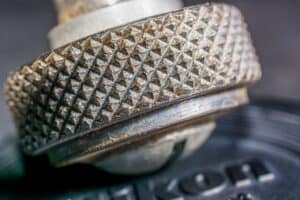During the manufacturing process of metal parts, they will undergo a series of processing processes, such as grinding, drilling, milling, turning, tapping, grooving, etc. After processing, it will inevitably leave excess protrusions or thorns. This is what we usually call a glitch.
Although the burr is small, it directly affects the beauty and use of the product, and even causes safety problems, so the burr must be removed.
Deburring is to remove excess bumps or thorns formed on the surface of parts by various methods.
Five types of metal burrs
According to the different processing methods, we can roughly divide the burrs into the following five types:
- Casting burr
The size of the burr is generally expressed in millimeters for excess material generated at the joints of the mold or at the root of the gate. - Forging burrs
At the seam of the metal mold, it is produced due to the plastic deformation of the forging material. - Electric welding and gas welding burrs
Electric welding burr is the burr where the filler at the weld protrudes from the surface of the part; gas welding burr is the slag that overflows from the incision when the gas is cut off. - Stamping burr
During stamping, there is a gap between the punch on the die and the lower die, or there is a gap between the tools at the incision, and burrs are generated due to die wear. - Cutting burrs
Processing methods such as turning, milling, planing, grinding, drilling, and reaming can also produce burrs. The burrs produced by various processing methods have different shapes with different tools and process parameters.
How to remove metal burrs?
There are so many burrs, how to remove them? Choosing the right tools and techniques for deburring will do more with less. This article will introduce you to several main deburring processes.
- Manual deburring
It refers to the process in which skilled workers use tools such as files, sandpaper, and grinding heads to polish the workpiece and remove burrs.
This method does not require very high technical requirements for workers, and is suitable for products with small burrs and simple product structure, so it is also a commonly used deburring method.
- Grinding and deburring
Grinding and deburring is a method of removing burrs by means of vibration, sandblasting, rollers, etc., and is also widely used at present.
The problem with grinding and deburring is that sometimes the removal is not very clean, and subsequent manual processing or other methods of deburring may be required. This method is suitable for large batches of small products. - High-pressure water jet deburring
Using water as a medium, the instantaneous impact force is used to remove the burrs or flashes generated after processing, and at the same time, the purpose of cleaning can be achieved. - Chemical deburring
By using the electrochemical reaction principle, the burrs of metal workpieces are automatically and selectively removed.
This method is more commonly used for internal burrs that are difficult to remove, such as small burrs on workpieces such as valve bodies and pump bodies. - Thermal deburring
The process is to fill some flammable gas into an equipment furnace, and then through the action of some media and conditions, the gas is instantly exploded, and the energy generated by the explosion is used to dissolve and remove the burr.
Thermal deburring is mainly used in some high-precision components, such as automotive and aerospace precision components.
Hope the above can help you.




